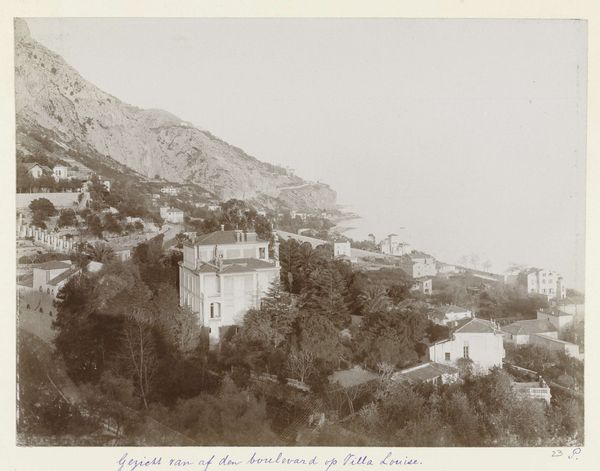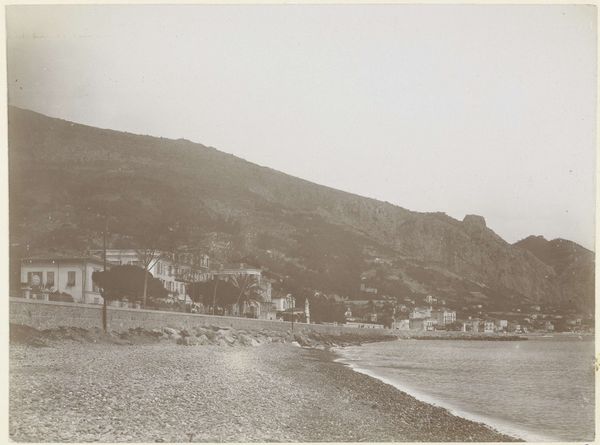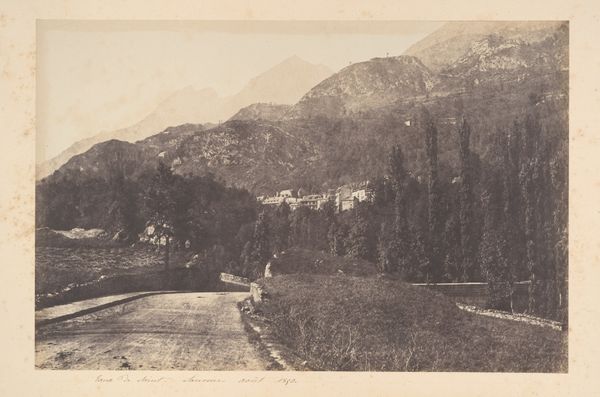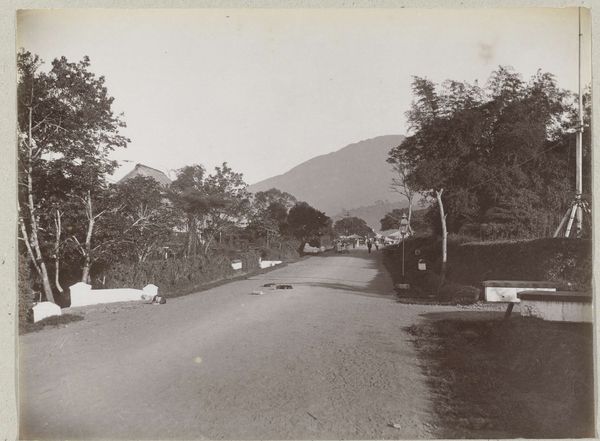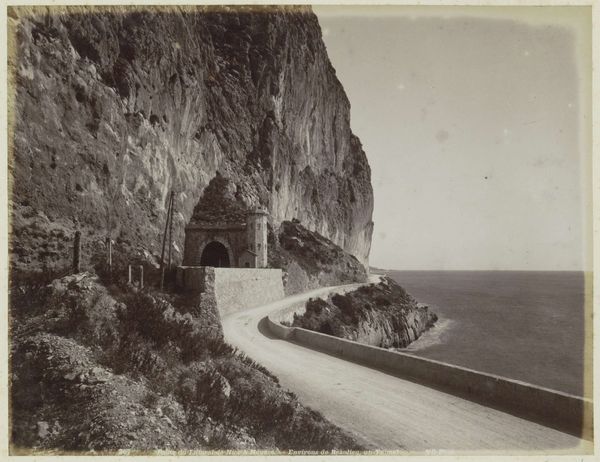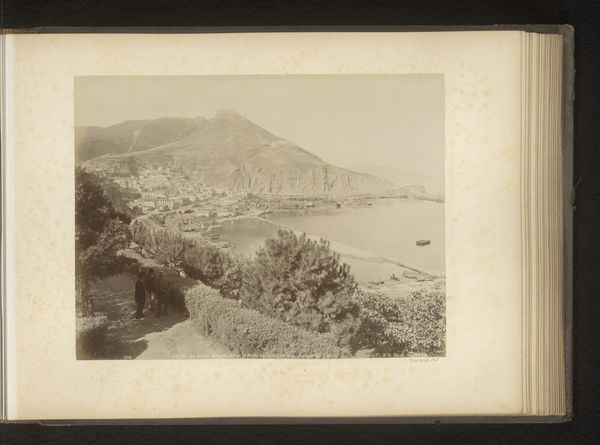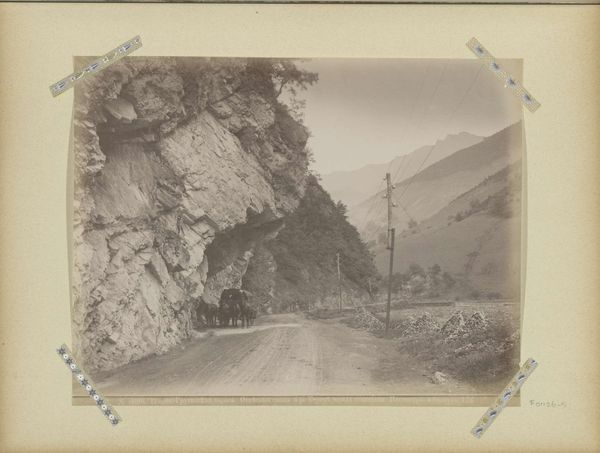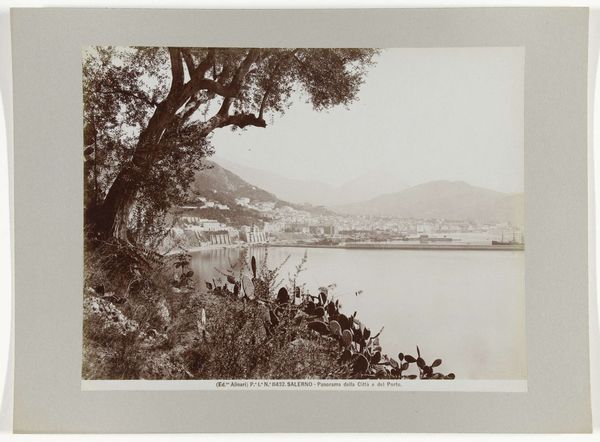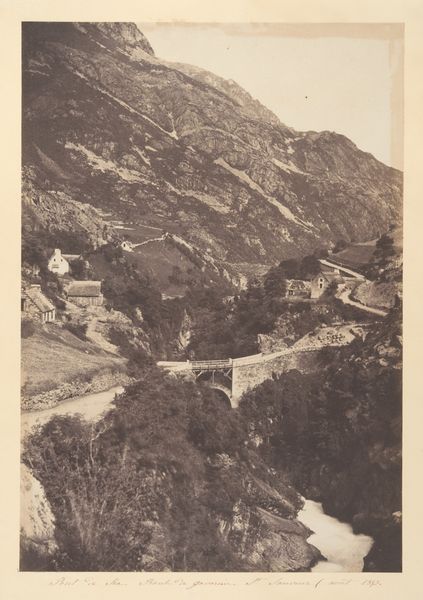
Gezicht op de Promrenade St. Louis, Frankrijk, met bergen en kust 1896
0:00
0:00
henrypauwvanwieldrecht
Rijksmuseum
photography
#
pictorialism
#
landscape
#
photography
#
cityscape
Dimensions: height 168 mm, width 228 mm, height 199 mm, width 269 mm
Copyright: Rijks Museum: Open Domain
Curator: This photographic print, taken in 1896 by Henry Pauw van Wieldrecht, offers a glimpse of the Promenade in St. Louis, France. What’s your first impression? Editor: It’s evocative! There's something about the haziness that lends an ethereal, almost dreamlike quality to the scene. The mountains sloping to the coast create a dramatic backdrop. Curator: Absolutely, and that haze is intentional. This photograph exemplifies pictorialism, where the goal was to emulate painting, using techniques like soft focus to achieve a painterly aesthetic. It aims to present the photographer as more than just someone recording a scene. Editor: Which brings us to the process. Consider the labour involved in photography at this time: glass plate negatives, cumbersome equipment, meticulous darkroom work. These images were hand-crafted. I'm wondering what type of paper was used to render such sepia tones? It really highlights the tangible work and materials required to capture even a simple landscape in this period. Curator: It’s compelling how that materiality informs the symbolic reading too. The light, or the lack thereof, affects my sense of cultural memory. This is a coastal town, which we might associate with vacations, tourism, but the lack of clarity lends an alienating atmosphere. Do you feel it as well? Editor: I do see that, but in contrast I can picture how it might invite travelers as something chic. Though it presents stillness now, a pristine space ready to be occupied, consumed as leisure. Curator: It also carries forward a kind of image that echoes through later twentieth-century representations. Editor: The debate around art and craft seems particularly potent here. On one hand we want to view the picture as ‘high art’, in an effort to imbue it with certain signifiers and meanings but can’t dismiss how materials speak in their own right. This is more than scenery, then. It is documentation that's inextricably tethered to historical processes. Curator: Indeed. Considering the period, perhaps that touch of wistfulness adds a layer of poignancy – a moment captured at the cusp of a new century, hinting at changes yet to come. Editor: I’ll have to think differently when encountering landscapes now, knowing there’s so much that lies beneath the surface of representation.
Comments
No comments
Be the first to comment and join the conversation on the ultimate creative platform.


